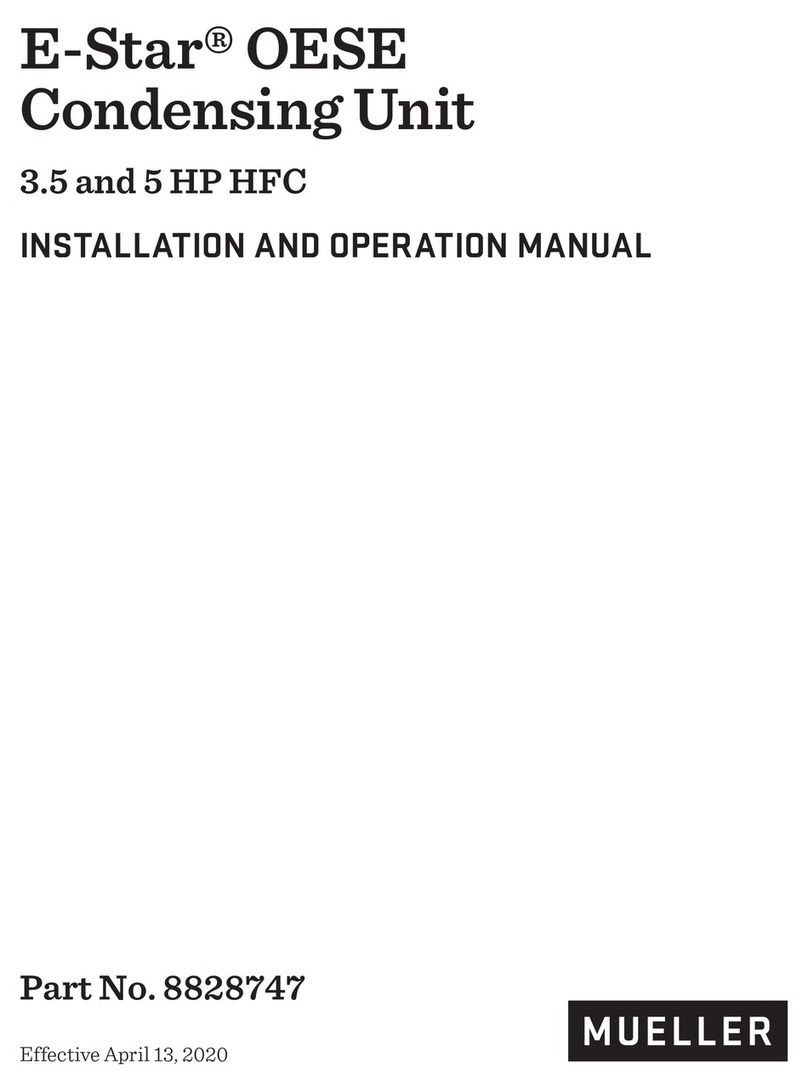
Section 12.0 – Disposal
12.1 General ....................................................................................................................24
12.2 Compressor Refrigerant Oil .............................................................................................24
12.3 Metal Components ........................................................................................................24
Section 13.0 – Equipment Markings
13.1 Label No. 8820454, Dry Nitrogen Holding Charge ......................................................................25
13.2 Label No. 8824716, HFC Refrigerant.....................................................................................25
13.3 Label No. 8824497, E-Star Data Tag .....................................................................................25
13.4 Label No. 8822574, Inspection Card. . . . . . . . . . . . . . . . . . . . . . . . . . . . . . . . . . . . . . . . . . . . . . . . . . . . . . . . . . . . . . . . . . . . . . . . . . . . . . . . . . . . . . 25
13.5 Label No. 8820155, Wiring Connections for Three-Phase Scrolls......................................................26
13.6 Label No. 8822225, CE Data Tag (UK Models Only). . . . . . . . . . . . . . . . . . . . . . . . . . . . . . . . . . . . . . . . . . . . . . . . . . . . . . . . . . . . . . . . . . . . . 26
13.7 Label No. 8822232, Warning Symbol: Hot ...............................................................................26
13.8 Label No. 8820623, Warning Symbol: Electrical ........................................................................26
13.9 Label No. 8822226, Warning: Screen Guard Removal ..................................................................27
13.10 Label No. 8822141, Warning: Risk of Electric Shock, Disconnect All Remote Power Supplies Before Servicing ....27
13.11 Label No. 8820764, Warning: Disconnect Power Before Screen Guard Removal .....................................27
13.12 Label No. 8820768, Warning: Place Screen Guard Before Unit Operation .............................................27
13.13 Label No. 8820769, Warning: Fan Will Start Automatically ...........................................................28
13.14 Label No. 8824383, Mueller Logo.........................................................................................28
13.15 Label No. 8822705, CSA. . . . . . . . . . . . . . . . . . . . . . . . . . . . . . . . . . . . . . . . . . . . . . . . . . . . . . . . . . . . . . . . . . . . . . . . . . . . . . . . . . . . . . . . . . . . . . . . . . . 28
Section 14.0 – Safety
14.1 Safety Alert ................................................................................................................29
14.2 Refrigerant Health Hazards ..............................................................................................29
14.3 First Aid ...................................................................................................................29
14.4 Personal Protective Equipment...........................................................................................29
Section 15.0 – Technical Data
15.1 E-Star OESE Electrical Data .............................................................................................30
15.2 E-Star OESE Refrigerant Data ...........................................................................................30
15.3 E-Star OESE Expansion Valve Selection ................................................................................30
Section 16.0 – Data Charts
16.1 ZB58K5E-TFC 3-Phase, 7.5 HP, 208–230 V Compressor Data Chart .................................................. 31
16.2 ZB58K5E-TFD 3-Phase, 7.5 HP, 460 V Compressor Data Chart........................................................32
16.3 ZB66K5E-TFC 3-Phase, 9 HP, 208–230 V Compressor Data Chart....................................................33
16.4 ZB66K5E-TFD 3-Phase, 9 HP, 460 V Compressor Data Chart .........................................................34
Section 17.0 – R-507 Pressure Temperature Chart ...............................................................35
Section 18.0 – E-Star OESE Installation Survey. . . . . . . . . . . . . . . . . . . . . . . . . . . . . . . . . . . . . . . . . . . . . . . . . . . . . . . . . . . . . . . . . . . 36
Table of Contents
Mueller E-Star OESE 7.5 and 9 HP HFC Condensing Unit
Installation and Operation Manual, Part No. 8828748 Effective June 16, 2020




























